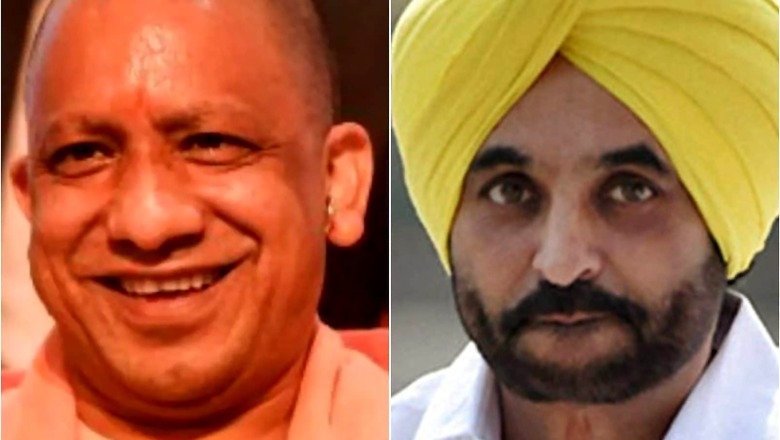
views
It is known that several chief ministers in India, even if belonging to different political parties and beliefs, award themselves with the maximum portfolios in their state, with the home department, especially, being their common favourite.
Be it BJP’s Yogi Adityanath, CPM’s Pinarayi Vijayan or AAP’s Bhagwant Mann, while they might be seen politically clashing quite often, the one thing that they have in common is the multiple portfolios under them.
Adityanath, sworn in as Uttar Pradesh chief minister for the second term last month, has kept 34 departments under his charge, while his Kerala and Punjab counterparts, Pinarayi Vijayan and Bhagwant Mann, have 27 portfolios each under them.
Similar is the case with Uttarakhand CM Pushkar Singh Dhami — 23 portfolios –, Jharkhand CM Hemant Soren — 19 portfolios –, Haryana CM Manohar Lal Khattar 16 portfolios –, Rajasthan’s Ashok Gehlot — 10 portfolios.
Interestingly, barring Khattar, all of the above mentioned chief ministers have kept the home department under their charge.
So, why do CMs like keeping the largest share of portfolios for themselves when they already have many other things to oversee in the functioning of their states?
To begin with why the crucial home department is a hot favourite, so much so that 17 chief ministers currently handle it, the reason is straight forward: it gives them direct control over the state police
However, in former Maharashtra chief minister Prithviraj Chavan’s opinion, this tendency of CMs of awarding maximum portfolios to self reflects “insecurity and a will to control”, reported The Print.
“A CM handling the maximum number of departments reflects insecurity and a will to control,” Chavan said.
“Some CMs prefer to keep 30-40 portfolios and hardly share any power with the cabinet. These are dictatorial personalities who want to keep control over the flock. Even Mr (Narendra) Modi’s government in Gujarat was the same. He worked with a lot of ministers of state and kept most departments with himself,” the report quoted Chavan as saying.
Chavan said was also of the view that nobody can do justice to so many departments, adding that this is just a way to “deny other colleagues the opportunity to grow”.
On the other hand, a retired IAS officer, who is a former chief secretary, had a different opinion to share. He said that whatever is important in a particular state, the chief minister would generally like to keep with them.
“For example, industries is an important department in Gujarat, but not so much in Uttar Pradesh. Finance is not a desirable portfolio because of the technicalities involved. It is mostly a function of reallocation and distribution,” the officer was quoted as saying.
There are also some chief ministers who have kept few to no portfolios with themselves, Delhi’s Arvind Kejriwal, Telangana’s K Chandrashekar Rao, and Arunachal Pradesh’s Pema Khandu being some of them.
Some civil servants said that factors like size of a state, compulsions of coalition politics, practical reasons, and sensitivity of the department under consideration also are key when it comes to portfolio allotment.
“The number of portfolios a chief minister holds depends on various factors including political background and type of cabinet ministers a CM has at their disposal. It is not a ‘one-size-fits-all’ approach,” a second retired civil servant said.
Read all the Latest Politics News and Breaking News here

















Comments
0 comment